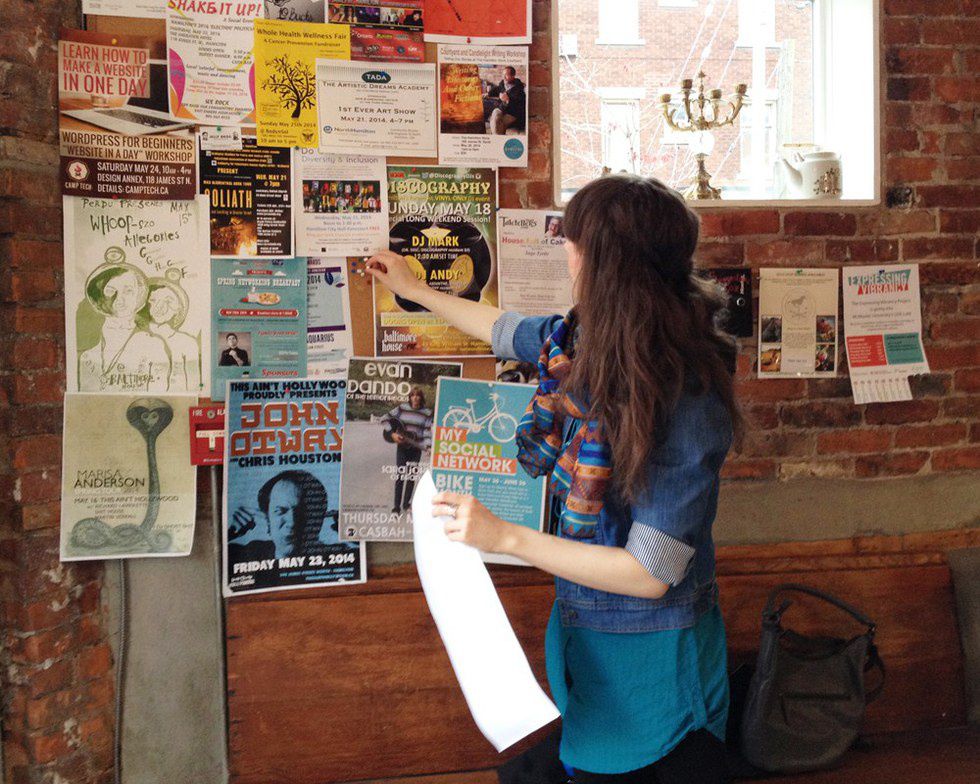Many Bushwick residents argue that gentrification only helps the new, usually white, residents that move in. Due to all of the renovations and openings of businesses like quirky bagel spots and specialized mayonnaise vendors, property taxes have increased. This causes longtime residents who rent their homes to not be able to afford them anymore. People come knocking on your door one day and ask to buy the property, displacing countless families and forcing them to look for another affordable area. Gentrification takes an affordable community and flips it into a higher-class, “cool” neighborhood.
After about two years of taking the J train to and from Bushwick, Brooklyn to visit my boyfriend, it’s become extremely obvious that things have changed drastically. Where the buildings were all uniform in age and wear now have some buildings much newer and more modern. Where the majority of the community was Latino and African-American now sees an increase in white people riding bicycles for leisure. There are new restaurants, new coffee shops, and new bars all with that “hipster” feeling.
On the surface, gentrification appears to be beneficial to the affected area. Gentrified areas usually see improvement in their economies due all of the new businesses, as well as reduced crime rates and better buildings and infrastructure. New jobs are created, and all of the new housing increases property taxes which, in turn, cause more money to go to the schools. Then, of course, we have a trendy, culturally-rich neighborhood where condos and apartments are shiny and new, attracting new residents. There's no doubt that gentrification has its benefits, but who exactly is it benefitting?
The influx of white residents also forces longtime business owners to either change their businesses to appeal to those white residents, or risk losing their business to someone who wants to buy the property. Bushwick business owners complain of having to add organic food to keep bodegas afloat, as well as feeling that their landlords will replace them as soon as a white buyer shows interest. People are constantly fearing that they will be bought out by a white person who can pay more for properties.
In Bushwick, it's obvious that longtime residents are marginalized, and conflict between new and old residents sees a rise in racial and class tensions. Walking through the streets of Bushwick, I often read graffiti saying things like “gentrification is neocolonialism” and “your luxury is our displacement." People complain of their once-authentic neighborhood losing its “soul” where family-owned shops are replaced with Starbucks, or a new ice cream parlor, or a stylish club. The culture of the area changes with the arrival of the new residents. Latinos are moving out, so authentic Colombian and Mexican food spots disappear. The local supermarket closes and is replaced by some all-organic place where the food is twice the price.
Bushwick natives are trying to fight back. Many protest, taking to the streets with signs written in Spanish. Mayday Space, an activist organization, worked with the NYC Light Brigade to create signs in protest of gentrification written in Christmas lights that were installed in homes throughout Bushwick.
Bushwick is one of the many areas being affected by gentrification. It’s not easy to tell whether gentrification has more positive or negative effects. However, when the residents of a community are losing their homes and businesses to [mostly] white people, gentrification can hardly be described as “harmless."






















